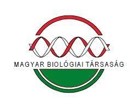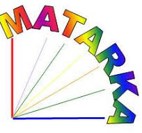A Pannon Magbank program (2010–2014) maggyűjtési, tárolási, előzetes életképesség vizsgálati eredményei és módszerei
Absztrakt
A 2010-2014 között megvalósuló Pannon Magbank program a Pannon Biogeográfiai Régió őshonos, vadon élő magvas növényeinek ex situ, magbankban történő hosszú távú megőrzését szolgálja. A program megvalósítása érdekében 2014. december 31-ig a következő célkitűzéseket tettük: (1) a hazai flóra legalább 800, magbanki tárolásra alkalmas (ortodox), őshonos, vadon élő fajának begyűjtése és hűtött magbanki tárolása, (2) a tárolásra szánt magtételek életképességének vizsgálata, (3) a rövid távú tárolás életképességre gyakorolt hatásának tesztelése egy reintrodukciós kísérlet keretében. Jelen munkában az (1) – (2) célkitűzéseket tárgyaljuk. A projekt keretében összesen 910 növényfaj 1853 tétele került begyűjtésre és tárolásra. Ezek magukba foglalják 204 védett növényfaj 364 tételét, valamint 45 fokozottan védett növényfaj 76 tételét. A tételek tárolása a génbanki szabványoknak megfelelően 0 °C-on működtetett aktív, illetve -20 °C-on üzemeltetett bázis tárolókban valósul meg. A csíráztatási kísérletek adatokat szolgáltattak néhány növényfaj csíráztatási módszerének hazai ökológiai viszonyokra történő alkalmazhatóságáról.
Hivatkozások
"13/2001." (V. 9.) KöM rendelet a védett és a fokozottan védett növény- és állatfajokról, a fokozottan védett barlangok köréről, valamint az Európai Közösségben természetvédelmi szempontból jelentős növény- és állatfajok közzétételéről.
Agacka, M., Laskowska, D., Doroszewska, T., Hay, F. R. & Börner, A. (2014): Longevity of Nicotiana seeds conserved at low temperatures in ex situ genebanks. – Seed Sci. Technol. 42: 355–362.
Baskin, J. M. & Baskin, C. C. (2004): A classification system for seed dormancy. – Seed Sci. Res. 14: 1–16.
Bekker, R. M., Bakker, J. P., Gradin, U., Kalamees, P., Milberg, P., Poschlod, P., Thompson, K. & Willems, H. (1998): Seed size, shape and vertical distribution in the soil: Indicators of seed longevity. – Funct. Ecol. 12: 834–842.
Bojnansky, V. & Fargasová, A. (2007): Atlas of Seeds and fruits of Central and East-European flora. The Carpathian Mountains Region. – Springer, 1046 pp.
Bossuyt, B. & Honnay, O. (2008): Can the seed bank be used for ecological restoration? An overview of seed bank characteristics in European communities. – J. Veg. Sci. 19: 87–884.
Bölöni, J., Molnár, Zs. & Kun, A. (szerk.) (2011): Magyarország élőhelyei. A hazai vegetációtípusok leírása és határozója. ÁNÉR 2011. – MTA Ökológiai és Botanikai Kutatóintézete, Vácrátót, 441 pp.
Cseresnyés, I. & Csontos, P. (2012): Soil seed bank of the invasive Robinia pseudoacacia in planted Pinus nigra stands. – Acta Bot. Croat. 71(2): 249–260.
Csiszár, Á. (2004): Adatok a magyar flóra fajainak magbank típus szerinti minősítéséhez. – Tájökológiai Lapok 2(2): 219–229.
Csontos, P. (2001): A természetes magbank kutatásának módszerei. – Synbiologia Hungarica 4. Scientia Kiadó, Budapest, 155 pp.
Csontos, P. (2007): Dolomitgyepek magbankja ültetett feketefenyvesek talajában. – Tájökológiai Lapok 5(1): 117–129.
Csontos, P., Hornánszky, A., Kalapos, T. & Lőkös, L. (1996): Seed bank of Pinus nigra plantations in dolomite rock grassland habitats, and its implications for restoring grassland vegetation. – Annls hist.-nat. Mus. natn. hung. 88: 69–77.
Csontos, P., Tamás, J. & Balogh, L. (2003): Thousand seed weight records of species from the flora of Hungary, I. Monocotyledonopsida. – Studia Bot. Hung. 34: 121–126.
Csontos, P., Bózsing, E., Kósa, G. & Zsigmond, V. (2006): Csírázóképesség vizsgálata természetes flóránk fajainak hagyományos gyűjteményekben őrzött magvain. – Bot. Közl. 93(1-2): 93–102.
Csontos, P., Tamás, J. & Balogh, L. (2007): Thousand seed weight records of species from the flora of Hungary, II. Dicotyledonopsida. – Studia Bot. Hung. 38: 179–189.
ENSCONET (2009a): ENSCONET Seed Collecting Manual for Wild Species. – Royal Botanic Gardens, Kew (UK) & Universidad Politécnica de Madrid (Spain), 32 pp. (interneten elérhető: http:// ensconet.maich.gr/PDF/Collecting_protocol_English.pdf)
ENSCONET (2009b): ENSCONET Curation Protocols & Recommendations. – Royal Botanic Gardens, Kew, 45 pp. (interneten elérhető: http://ensconet.maich.gr/PDF/Curation_protocol_English. pdf)
FAO (2013): Genebank Standards for Plant Genetic Resources for Food and Agriculture. – Food and Agriculture Organization of the United Nations, Rome, 166 pp.
FAO/IPGRI (1994): Genebank Standards. – Food and Agriculture Organization of the United Nations, Rome & International Plant Genetic Resources Institute, Rome, 13 pp.
Groot, S. P. C., Groot, L., de Kodde, J. & van Treuren, R. (2015): Prolonging the longevity of ex situ conserved seeds by storage under anoxia. – Plant Genet. Resour. C. 13(1): 18–26.
Grubb, P. J. (1988): The uncoupling of disturbance and recruitment, two kinds of seed bank and persistence of plant populations at the regional and local scales. – Ann. Zool. Fenn. 25: 23–26.
Halassy, M. (2001): Possible role of the seed bank in the restoration of open sand grassland in old fields. – Community Ecol. 2(1): 101–108.
Halmagyi, A. & Pinker, I. (2014): Germination and cryopreservation responses of Jatropha curcas in relation of seed qualits. – Seed Sci. Technol. 42: 344–354.
Hong, T. D. & Ellis, R. H. (1996): A protocol to determinate seed storage behaviour, IPGRI Technical Bulletin No. 1. – International Plant Genetic Resources Institute, Rome, 62 pp.
Horváth, F., Dobolyi, Z. K., Morschhauser, T., Lőkös, L., Karas, L. & Szerdahelyi, T. (1995): Flóra Adatbázis 1.2. Taxonlista és attribútum-állomány. – Vácrátót, 267 pp.
ISTA (2013): International rules for seed testing. – Internation Seed Testing Association, Bassersdorf.
Király, G. (szerk.) (2009): Új magyar füvészkönyv. Magyarország hajtásos növényei. Határozókulcs. Ábrák. – Aggteleki Nemzeti Park Igazgatóság, 616 pp, 675 pp.
Koncz, G., Papp, M., Török, P., Kotroczó, Zs., Krakomperger, Zs., Matus, G. & Tóthmérész, B. (2010): The role of seed bank in the dinamics of understorey in an oak forest in Hungary. – Acta Biol. Hung. 61: 109–119.
Lima, M. de Jr., Hong, T. D., Arruda, Y. M. B. C., Mendes, A. M. S. & Ellis, R. H. (2014): Classification of seed storage behaviour of 67Amazonian tree species. – Seed Sci. Technol. 42: 363–392.
Matus, G., Tóthmérész, B. & Papp, M. (2003): Restoration prospects of abandoned species-rich sandy grassland in Hungary. – Appl. Veg. Sci. 6: 169–178.
Matus, G., Tóthmérész, B. & Papp, M. (2005): Impact of management on vegetation dynamics and seed bank formation of inland dune grassland in Hungary. – Flora 200: 296–306.
Rao, N.K., Hanson, J., Dulloo, M.E, Ghosh, K., Novell, D. & Larinde, M. (2006): Manual of seed handling in genebanks. Handbooks for Genebanks No. 8. – Bioversity International, Rome, 147 pp.
Schermann, Sz. (1966): Magismeret I. – Akadémiai Kiadó, Budapest, 861 pp.
Smith, R. D., Dickie, J. B., Linington, S. H., Pritchard, H. W. & Probert, R. J. (eds.) (2003): Seed Conservation: Turning Science Into Practice. – Royal Botanic Gardens, Kew, UK, 1023 pp.
Thompson, K. (1992): The functional ecology of seed banks. – In: Fenner, M. (ed.): Seeds. The ecology of regneration in plant communities. Redwood Books, Trowbridge, UK, pp. 231–257.
Thompson, K. (1993): Seed persistence in soil – In: Hendry, G. A. F., Grime, J. P. (eds.): Methods in comparative plant ecology. Champman and Hall, London, pp. 199–202.
Thompson, K. & Grime, J. P. (1979): Sesonal variation in the seed banks of herbaceous species in ten contrasting habitats. – J. Ecol. 67: 893–921.
Thompson, K., Bakker, J. P. & Bekker, R. M. (1997): Soil seed banks of North West Europe: methodology, density and longevity. – Cambridge University Press, Cambridge.
Tóth, K. & Hüse, B. (2014): Soil seed banks in loess grasslands and their role in grassland recovery. – Appl. Ecol. Env. Res. 12(2): 537–547.
Török, P., Matus, G., Papp, M. & Tóthmérész, B. (2009): Seed bank and vegetation development of sandy grasslands after goose breeding. – Folia Geobot. 44: 31–46.
Török, P., Miglécz, T., Valkó, O., Kelemen, A., Deák, B., Lengyel, Sz. & Tóthmérész, B. (2012): Recovery of native grass biodiversity by sowing on former croplands: Is weed suppression a feasible goal for grassland restoration? – J. Nat. Conserv. 20: 41–48.
Török, P., Miglécz, T., Valkó, O., Tóth, K., Kelemen, A., Albert, Á., Matus, G., Molnár, V. A., Ruprecht, E., Papp, L., Deák, B., Horváth, O., Takács, A., Hüse, B. & Tóthmérész, B. (2013): New thousand-seed weight records of the Pannonian flora and their application in analysing Social Behaviour Types. – Acta Bot. Hung. 55 (3-4): 429–472.
Valkó, O., Török, P., Vida, E., Arany, I., Tóthmérész, B. & Matus, G. (2009): A magkészlet szerepe két hegyi kaszálórét közösség helyreállításában. – Természetvédelmi Közlem. 15: 147–159.
Valkó, O., Török, P., Tóthmérész, B. & Matus, G. (2011): Restoration potential in seed banks of acidic fen and dry-mesophilous meadows: Can restoration be based on local seed banks? – Restor. Ecol. 19(101): 9–15.
Valkó, O., Tóthmérész, B., Kelemen, A., Simon, E., Miglécz, T., Lukács, B. & Török, P. (2014): Environmental factors driving vegetation and seed bank diversity in alkali grasslands. – Agr. Ecosyst. Environ. 182: 80–87.
van Hintum, T. & van Treuren, R. (2012): Reliability of germination testing of ex situ conserved seeds: a genebank case study on outsourced analyses. – Plant Genet. Resour. C. 10(2): 134–136.
Walters, C., Wheeler, L. M. & Grotenhuis, J. M. (2005): Longevity of seeds stored in a genebank: species characteristics. – Seed Sci. Res. 15: 1–20.
Zsigmond, V. (szerk.) (2011): Maggyűjtési Útmutató. – Kézirat, 16 pp. (interneten elérhető: http://www.pannonmagbank.hu/pmb/wp-content/uploads/2013/06/PMB_Maggyujtesi-utmutato.pdf)
"[1]" Pannon Magbank Projekt. Gyűjthető fajok listája. http://www.pannonmagbank.hu/pmb/?page_id=158/
"[2]" Royal Botanic Gardens, Kew. Seed Information Database. http://data.kew.org/sid/sidsearch.html
"[3]" Pannon Magbank Projekt. Maggyűjtési adatlap. http://www.pannonmagbank.hu/pmb/wp-content/uploads/2013/06/Gyujtesi-adatlap_final.pdf
"[4]"The Digital Plant Atlas. http://econ.eldoc.ub.rug.nl/index.php?lang=nl/






